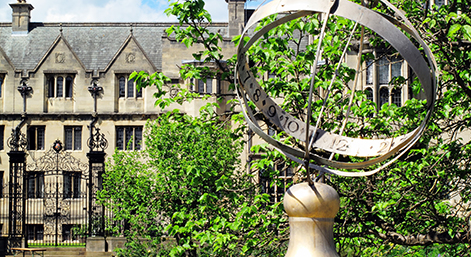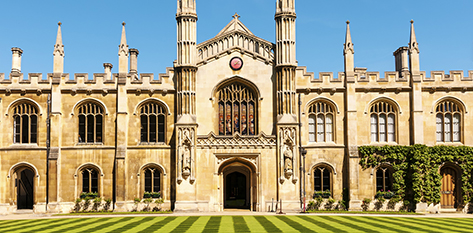Recently Updated Blogs
Most Overused Personal Statement Topics Whilst consulting ‘the classics’ of your subject is important for getting a well-rounded overview, applicants often risk packing their personal statements with the same resources or topics as every other applicant. Our expert consultants have spent years advising thousands of applicants on their personal statements,…
Following several years of disruption and format changes to Oxford and Cambridge interviews as a result of the COVID-19 pandemic, applicants eagerly await notification from the universities to confirm in what format their interviews will be. Will they be in person or online; what equipment will be required; and how…
If you’re sitting an admissions test (or two!) this autumn for your application to Oxford or Cambridge, it’s crucial that you get a few key dates into your diary, namely: registration opening, registration closing, and the date of the test itself! Jump to the test(s) you are taking to note…
How Can I Use ChatGPT for My Personal Statement? With AI-powered tools such as ChatGPT becoming increasingly popular, we are seeing more and more applicants wondering about how to use these tools to help their university application. Whilst harnessing AI can be very beneficial, danger this way lies: over-reliance…
Choosing an Oxford College One key aspect which separates an Oxbridge application from most other UK universities is the choice of college. The college you are offered a place for will be a big part of your university experience. However, how do you pick between colleges when you don’t know…



 Many people are under the impression that it is more expensive to study at Oxford or Cambridge. This is emphatically not the case.
Many people are under the impression that it is more expensive to study at Oxford or Cambridge. This is emphatically not the case. Oxford
Oxford Cambridge
Cambridge Last year, over 4,200 UK students chose US universities for their undergraduate studies. With over 4,500 universities to choose from, and a whole new vocabulary to learn, the admissions process can be daunting. With a basic understanding of a few of the terms and processes, however, and a good selection of reference materials, both students and advisors can overcome the challenges of navigating the US university admissions system.
Last year, over 4,200 UK students chose US universities for their undergraduate studies. With over 4,500 universities to choose from, and a whole new vocabulary to learn, the admissions process can be daunting. With a basic understanding of a few of the terms and processes, however, and a good selection of reference materials, both students and advisors can overcome the challenges of navigating the US university admissions system. US universities, like those in the UK, accept applications during the fall, September-January. Also like the UK, many use a common application, helpfully named
US universities, like those in the UK, accept applications during the fall, September-January. Also like the UK, many use a common application, helpfully named  Most US universities require admissions tests. A student can choose between the SAT or the ACT, but should check with the university website to see if either is preferred. In addition, the most selective of US universities often require the student to submit SAT Subject Test scores. Most students sit for the SAT or ACT twice, so it is important to start the testing process early. Students in their AS year should sit the exam in either January, May or June, with the idea of re-sitting it in their A Level year in October, November or December. Registration is all online, and there is no late registration. Students may register and get more information on
Most US universities require admissions tests. A student can choose between the SAT or the ACT, but should check with the university website to see if either is preferred. In addition, the most selective of US universities often require the student to submit SAT Subject Test scores. Most students sit for the SAT or ACT twice, so it is important to start the testing process early. Students in their AS year should sit the exam in either January, May or June, with the idea of re-sitting it in their A Level year in October, November or December. Registration is all online, and there is no late registration. Students may register and get more information on  With so many to choose from, it’s important that students start the process by thinking about what type of a university they want by considering location, size, academic offerings and cost. The best place to begin is on
With so many to choose from, it’s important that students start the process by thinking about what type of a university they want by considering location, size, academic offerings and cost. The best place to begin is on  Make no mistake; it’s expensive to study at US universities. The vast majority are residential in nature, and a student has to consider not only the tuition and fees but the room and board. Tuition and fees can vary significantly from university to university, as there are no standard government-set fees as in the UK. Private universities are generally the most expensive, with state-funded universities often less so. However, as private universities often have more financial aid available, the price for the student can sometime be even less than at a state institution.
Make no mistake; it’s expensive to study at US universities. The vast majority are residential in nature, and a student has to consider not only the tuition and fees but the room and board. Tuition and fees can vary significantly from university to university, as there are no standard government-set fees as in the UK. Private universities are generally the most expensive, with state-funded universities often less so. However, as private universities often have more financial aid available, the price for the student can sometime be even less than at a state institution.  Ideally, students interested in applying to the US will begin the testing process in the spring of their penultimate year in school, with re-sits in the autumn of their last year. Application deadlines vary, but the majority fall in November-January. Students will receive a response to their applications in mid-late March, with April 1 being the reply day for Ivy League universities. Students have until May 1 to make their decisions, and must notify their university of choice that they will be attending by that date. Students who are also applying to UK universities and waiting for exam results in August should accept their US offer, and then if they decide to take their UK choice, simply notify the US university to say that their plans have changed.
Ideally, students interested in applying to the US will begin the testing process in the spring of their penultimate year in school, with re-sits in the autumn of their last year. Application deadlines vary, but the majority fall in November-January. Students will receive a response to their applications in mid-late March, with April 1 being the reply day for Ivy League universities. Students have until May 1 to make their decisions, and must notify their university of choice that they will be attending by that date. Students who are also applying to UK universities and waiting for exam results in August should accept their US offer, and then if they decide to take their UK choice, simply notify the US university to say that their plans have changed.

